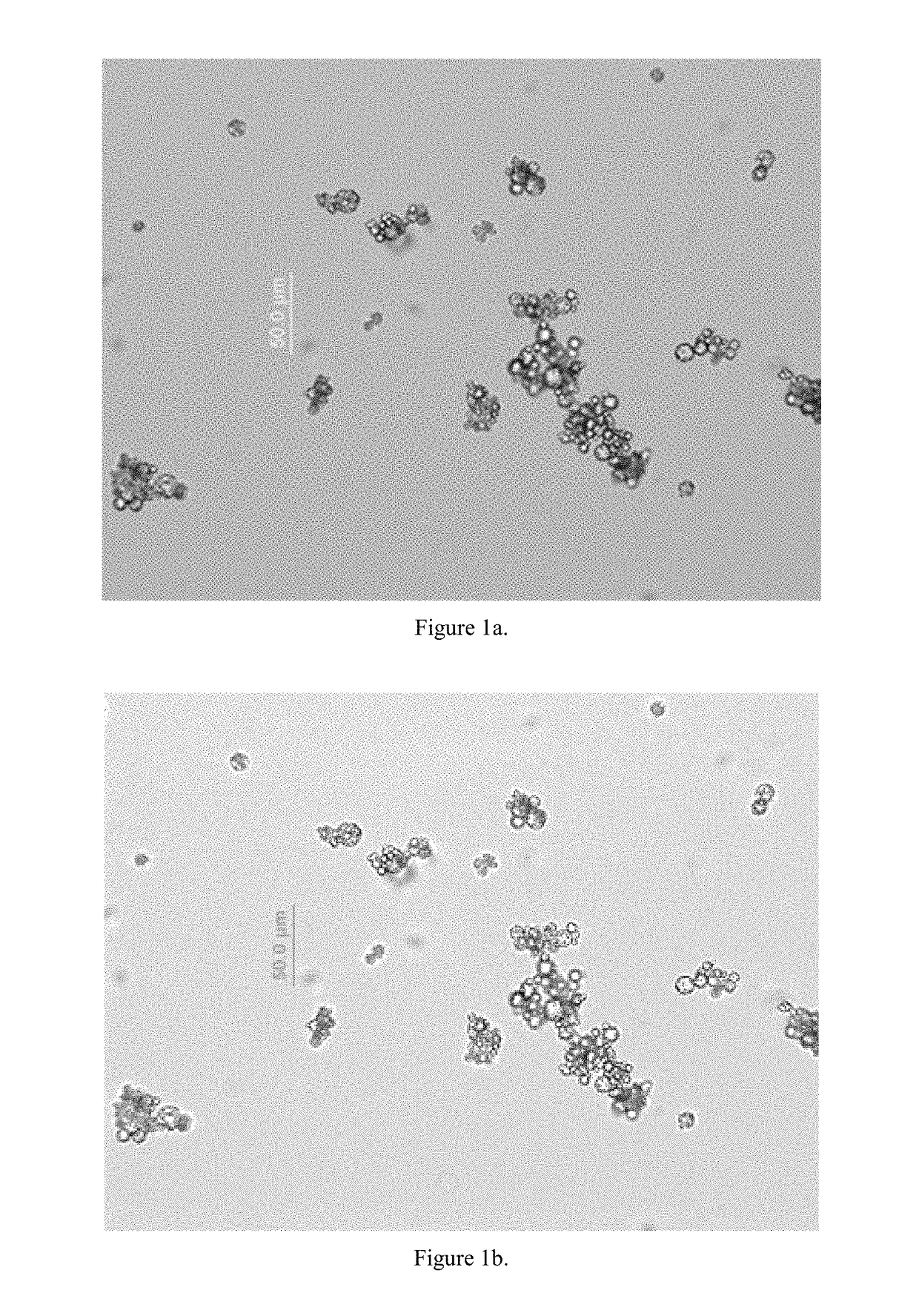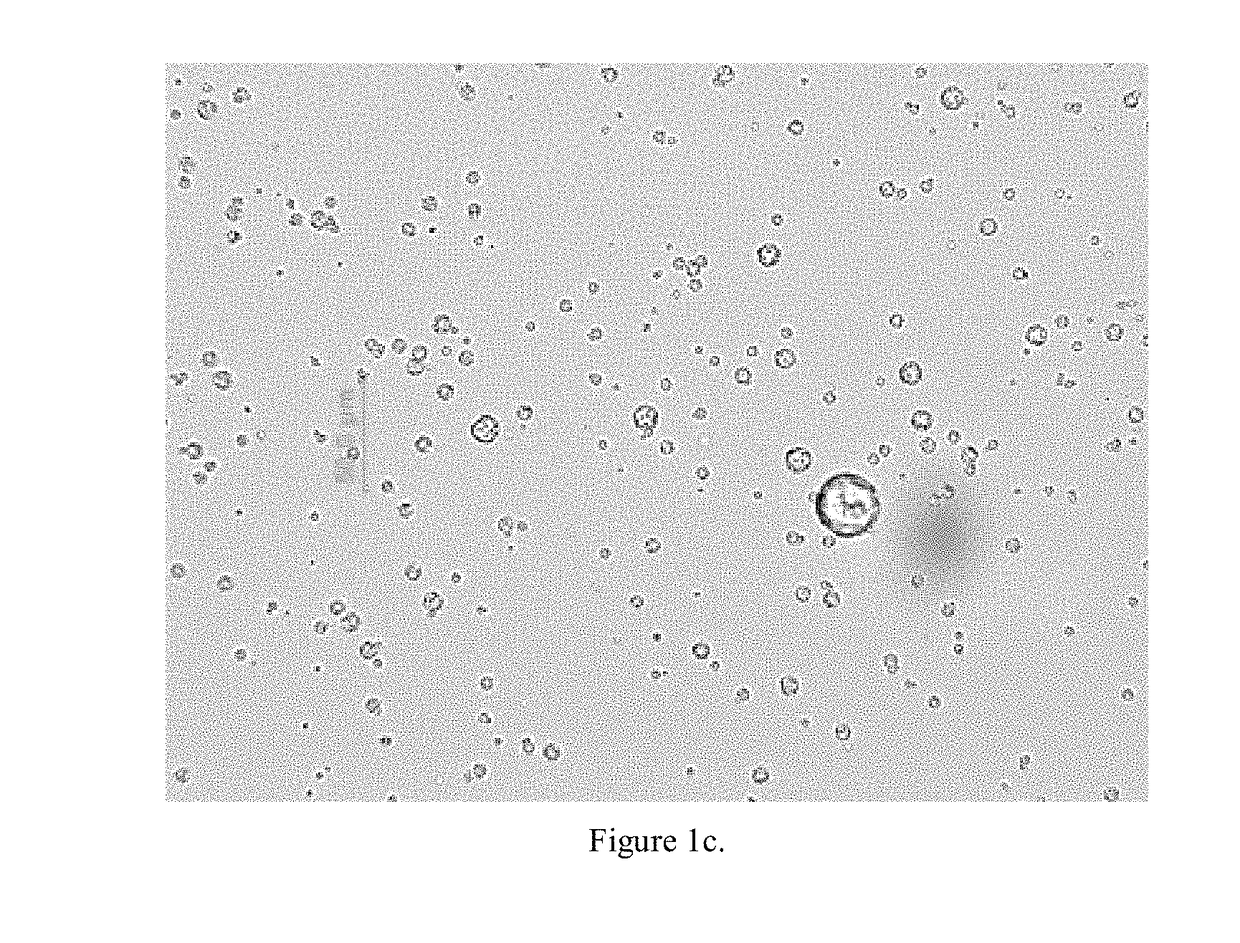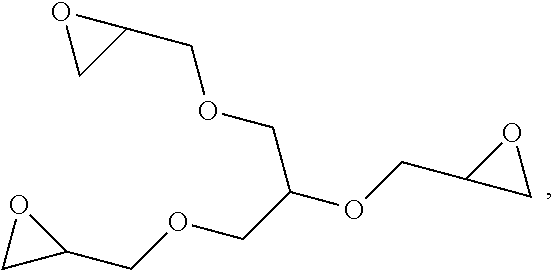Capsule aggregates
a technology of aggregates and capsules, applied in the field of capsule aggregates, can solve the problems of reducing the perceived olfactory intensity of capsules, affecting the adhesion performance of capsules, and affecting the effect of capsules, etc., and achieves the effect of improving deposition and high perceived olfactory intensity
- Summary
- Abstract
- Description
- Claims
- Application Information
AI Technical Summary
Benefits of technology
Problems solved by technology
Method used
Image
Examples
example 1
[0368]Three aggregates of this invention, i.e., Aggregates 1-3, were prepared in this example and Examples 2 and 3 below.
Preparing of Polyurea (PU) Capsule
[0369]PU capsules for forming Aggregates 1 and 2 were prepared following the procedure below.
[0370]Fragrance Apple (25.8 g; International Flavors and Fragrance Inc., Union Beach) was mixed with NEOBEE oil (6.4 g; Stepan) and Lupranate M20 (2.6 g; polymeric methylene diphenyl diisocyanate; purchased from BASF), to form an oil phase. Subsequently, the oil phase was emulsified into an aqueous solution of 1.9% Morwet D425 (42.8 g; a sodium salt of naphthalene sulfonate condensate; AkzoNobel) under high shearing (IKA-ULTRA TURRAX, T25 Basic) at 9500 rpm for three minutes. The resultant fragrance emulsion was heated to 35° C. and 2.9 g of 40% hexamethylene diamine was added under constant mixing with an overhead mixer. After 15 minutes of stirring at 35° C., the capsule slurry was cured at 55° C. for two hours and then cooled to room te...
example 2
[0375]Another aggregate of this invention, Aggregate 2, was prepared following a procedure similar to that described in Example 1.
[0376]More specifically, to a PU capsule dispersion (73.8 g) was added 9.5 g of Lupamin 9095 under agitation until a homogeneous mixture was obtained. Subsequently, 16.7 g of 3% alginate polymer (RF-6650; commercially available from FMC BioPolymer) was added and homogenized using a Silverson shear mixer at 4000-6000 rpm for one minute to obtain a polymeric mixture. Under agitation at 200-600 rpm, 10 g of 0.05% sodium sulfate was added and the mixture was stirred using an overhead mixer at 200-250 rpm. 2.1 g of 50% of lactic acid solution was added during a period of 1 to 3 minutes under agitation. The resultant slurry was stirred for additional 15 minutes to obtain Aggregate 2.
[0377]The particle size was determined by microscope imaging to be 10 to 50 microns. See FIG. 1b.
[0378]The performance test of Aggregate 2 was evaluated following the procedure in ...
example 3
[0379]A third aggregate, i.e., Aggregate 3, was prepared following the procedure below. Unlike in Examples 1 and 2, the binder polymer Walocel CRT 50000 PA was used as a dispersant for preparing the PU capsule incorporated in the aggregate.
[0380]More specifically, 25.9 g of fragrance Apple (International Flavors and Fragrance Inc., Union Beach) was mixed with 6.5 g of NEOBEE oil (Stepan) and 3.2 g of polyisocyanate Lupranate M20 to form an oil phase. In a separate beaker, an aqueous phase was prepared by dissolving 5 g of 10% Morwet D425 and 15 g of 2% Walocel CRT 50000 PA in 21.1 g of water. The oil phase was then emulsified into the aqueous phase to form a fragrance emulsion under high shearing at 9500 rpm for three minutes. After the fragrance emulsion was heated to 35° C., 3.6 g of 40% hexamethylene diamine was added under constant stirring. The resultant slurry was stirring for additional 15 minutes and then cured at 55° C. for two hours to obtain a capsule dispersion.
[0381]At ...
PUM
| Property | Measurement | Unit |
|---|---|---|
| particle size | aaaaa | aaaaa |
| molecular weight | aaaaa | aaaaa |
| particle size | aaaaa | aaaaa |
Abstract
Description
Claims
Application Information
 Login to View More
Login to View More - R&D
- Intellectual Property
- Life Sciences
- Materials
- Tech Scout
- Unparalleled Data Quality
- Higher Quality Content
- 60% Fewer Hallucinations
Browse by: Latest US Patents, China's latest patents, Technical Efficacy Thesaurus, Application Domain, Technology Topic, Popular Technical Reports.
© 2025 PatSnap. All rights reserved.Legal|Privacy policy|Modern Slavery Act Transparency Statement|Sitemap|About US| Contact US: help@patsnap.com



